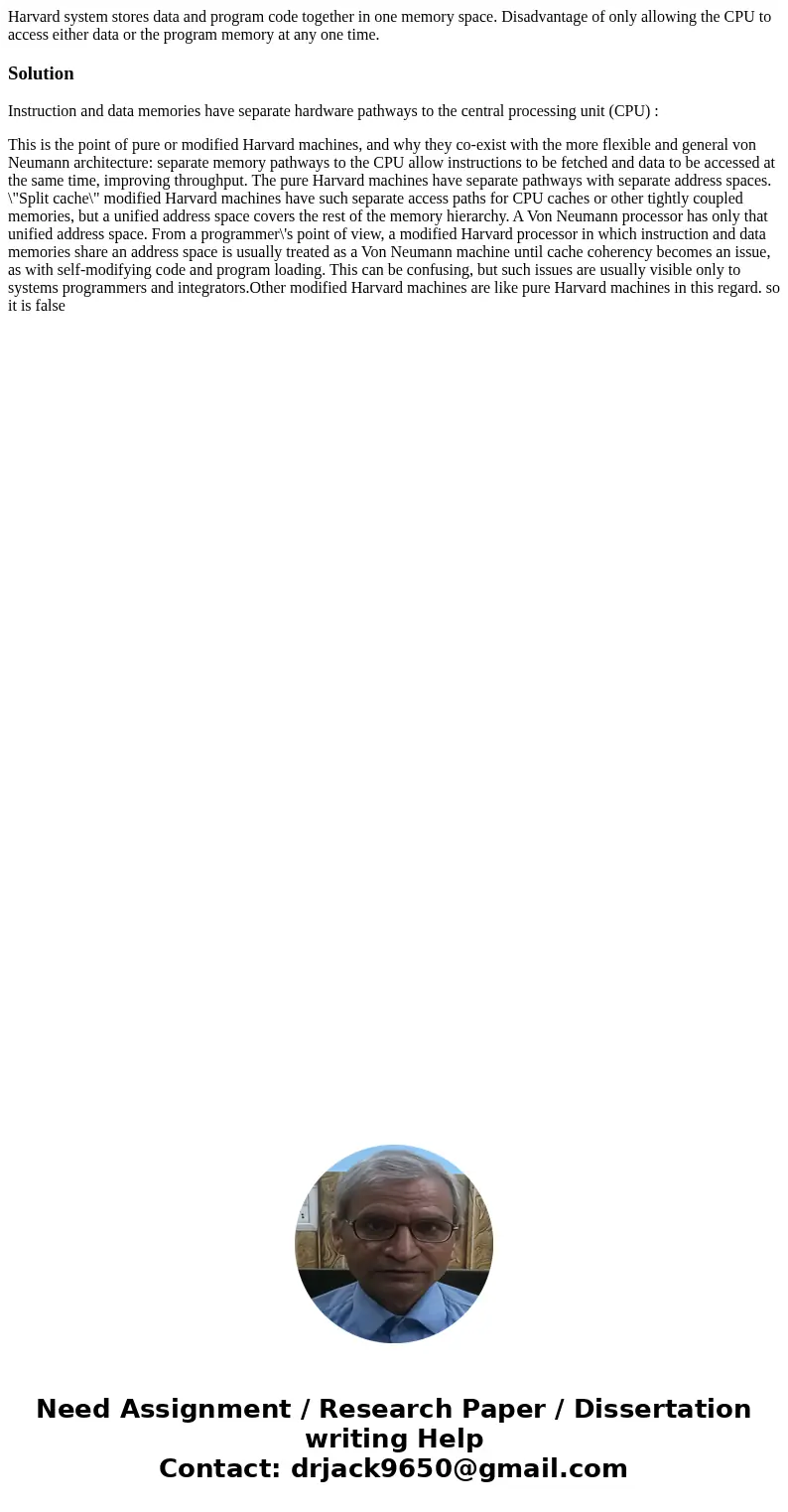Harvard system stores data and program code together in one
Solution
Instruction and data memories have separate hardware pathways to the central processing unit (CPU) :
This is the point of pure or modified Harvard machines, and why they co-exist with the more flexible and general von Neumann architecture: separate memory pathways to the CPU allow instructions to be fetched and data to be accessed at the same time, improving throughput. The pure Harvard machines have separate pathways with separate address spaces. \"Split cache\" modified Harvard machines have such separate access paths for CPU caches or other tightly coupled memories, but a unified address space covers the rest of the memory hierarchy. A Von Neumann processor has only that unified address space. From a programmer\'s point of view, a modified Harvard processor in which instruction and data memories share an address space is usually treated as a Von Neumann machine until cache coherency becomes an issue, as with self-modifying code and program loading. This can be confusing, but such issues are usually visible only to systems programmers and integrators.Other modified Harvard machines are like pure Harvard machines in this regard. so it is false

 Homework Sourse
Homework Sourse